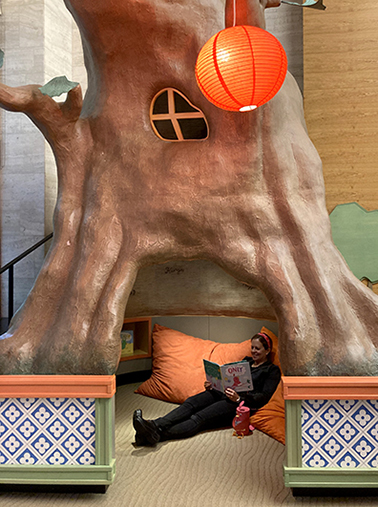 There’s lots of dancing, singing, chatting, and partying out there in the world, but what happens if you just want to be a little quiet and alone time? What if what you really need is a calm nest and a good book? And who is that in our library tree? Could it be…the author of today’s book? YES!
There’s lots of dancing, singing, chatting, and partying out there in the world, but what happens if you just want to be a little quiet and alone time? What if what you really need is a calm nest and a good book? And who is that in our library tree? Could it be…the author of today’s book? YES!
We read Only, written and illustrated by Airlie Anderson (Hachette Book Group, 2024). The tree is lively with Singy, Squawky, Tappy, Flappy, Chippy, and Flippy, who are full of songs, games, and cheer. But it’s all too much for Only, who flies away to build a quiet nest, close the door, and read. While the other birds can’t figure out why Only wants to be quiet and alone, Squawky stops by for a visit. As it turns out, hanging out and doing things doesn’t always have to be loud. And, equally importantly, being alone doesn’t necessarily mean being lonely!
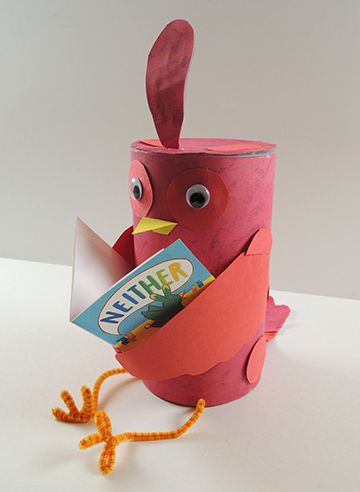
We were so excited to have Airlie Anderson come to our library to share Only! Definitely Check out my interview with her at the end of the post!
You’ll need:
- 1 oatmeal container
- Construction paper
- 1 pipe cleaners
- Scissors, glue, and tape for construction
- Markers for decorating
This project is a fairly simple oatmeal container bird, but as a nod to one of Only’s favorite quiet time activities, we added a little book! Did you notice the cover? That’s right! It’s one of Airle’s other books, Neither!

We added one more touch to the project. In the book, Only and Squawky listen to music together wearing headphones. We loved Airlie’s illustration so much, as well as the concept of sharing an experience quietly together, that we added foam headphones kids could wear too!
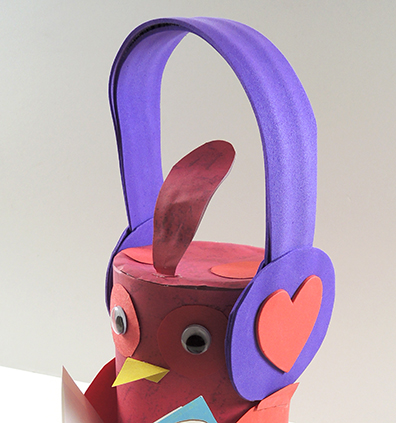 To make these, you’ll need some self adhesive foam and two pipe cleaners. Lay two sheets of foam on top of one another, then cut a pair of circles and two strips (for a total of 4 circles and 2 strips). Peel the backing off one set and lay everything sticky side up. Place the strip on top of the two circles, then lay the two pipe cleaners along the length of the strip like so:
To make these, you’ll need some self adhesive foam and two pipe cleaners. Lay two sheets of foam on top of one another, then cut a pair of circles and two strips (for a total of 4 circles and 2 strips). Peel the backing off one set and lay everything sticky side up. Place the strip on top of the two circles, then lay the two pipe cleaners along the length of the strip like so:
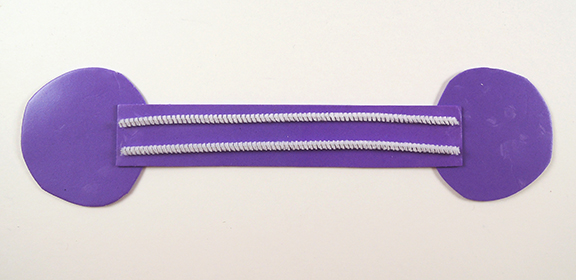
Peel the backing off the remaining pieces, then place them sticky side down on the first set. Bend the pipe cleaners to fit around your head, and you’re done. Enjoy your time with your new friend!
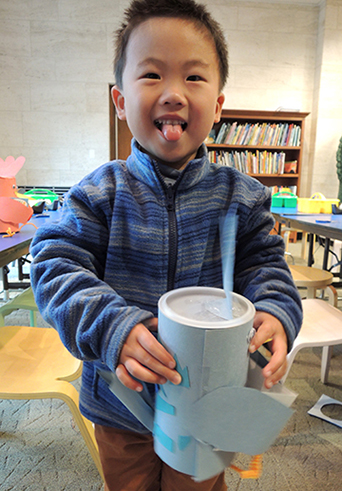 I can’t recommend Airlie enough for a library visit. She is funny, engaging, wonderful with the kids, and jumps right into the craft project. In fact, this is the second time she’s come to a Cotsen story time and we hope to have her back for many more!
I can’t recommend Airlie enough for a library visit. She is funny, engaging, wonderful with the kids, and jumps right into the craft project. In fact, this is the second time she’s come to a Cotsen story time and we hope to have her back for many more!

Hi Airlie! Welcome back to Pop Goes the Page! How are you doing?
I’m having a happy day, thank you! Glad to be back at Pop Goes the Page.
How did the concept of this book come to be?
The concept of Only came to me during quarantine, during which I discovered that I am not as much of an introvert as I once thought. Not only do I enjoy alone time, I also like being around crowds, in public. I wanted to make a book about experiencing both of those dynamics, and how different characters enjoy various levels of that.
In addition to Only, there are also birds named Singy, Squawky, Tappy, Flappy, Chippy, and Flippy. Which one is most like you?
I love this question! I hadn’t thought of that before. But now that you mention it, I’m most like Squawky. Squawky is the bird who ventures into the quiet nest because they don’t feel like playing bird ball at that moment.
Only the bird has a pretty amazing “quiet nest” stocked with toys and activities. What would your personal quiet nest include?
My quiet nest would look a lot like Only’s quiet nest, except that I don’t know how to knit! But I enjoy drawing balls of yarn. So definitely stacks of books (I’m currently reading one of Carrie Fisher’s memoirs), art supplies, headphones, and journals. I would add a yoga mat and one of those electric pots for making hot water for tea.
What are you working on now?
Right now I’m “filling the well” of creativity, so for me that means reading lots of different kinds of books, for grown-ups and kids. I’ve been watching movies from the early Hollywood era — I feel quite drawn to them for some mysterious reason. Sometimes story ideas come from unexpected places, so I follow my bliss when it comes to that. Have you seen His Girl Friday? Amazing. The picture book that I have on deck is still developing, and it involves rodents. I am super excited about it!

 Today, I am delighted to introduce guest blogger Dr. Miranda Sachs! Miranda studied History at Princeton University, and graduated in 2011. She worked extensively at our library, both in special collections and with me in community outreach. Miranda earned her PhD at Yale, and is now an assistant professor of European History at Texas State University.
Today, I am delighted to introduce guest blogger Dr. Miranda Sachs! Miranda studied History at Princeton University, and graduated in 2011. She worked extensively at our library, both in special collections and with me in community outreach. Miranda earned her PhD at Yale, and is now an assistant professor of European History at Texas State University.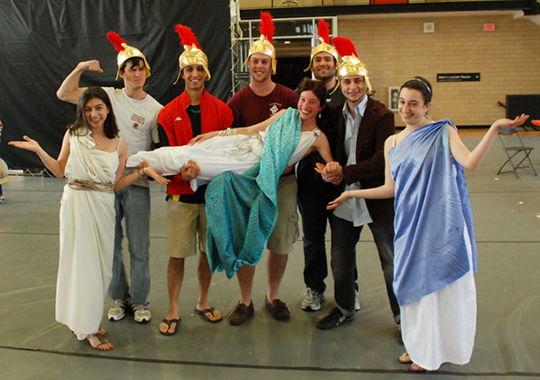
 Because of the new Lightning Thief mini-series, the library has some of the highlights from Riordan’s collection on display. As soon as I walked in the door, I saw a shirt for Camp Half-Blood. The display case had a replica of Riptide used for the film and some neat photos of Riordan speaking to kids. It also had hand-written copies of stories Riordan wrote as a kid! The room where I got to look at the documents had art on display from the covers of some of the books.
Because of the new Lightning Thief mini-series, the library has some of the highlights from Riordan’s collection on display. As soon as I walked in the door, I saw a shirt for Camp Half-Blood. The display case had a replica of Riptide used for the film and some neat photos of Riordan speaking to kids. It also had hand-written copies of stories Riordan wrote as a kid! The room where I got to look at the documents had art on display from the covers of some of the books.
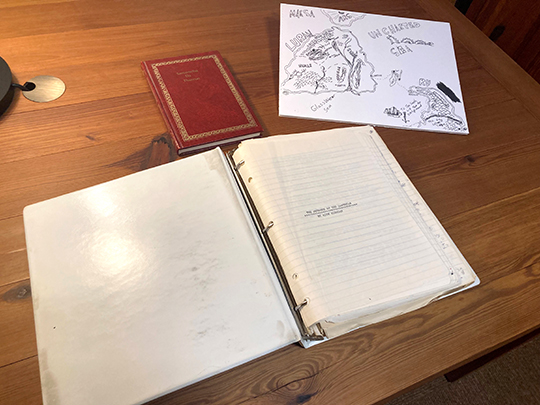
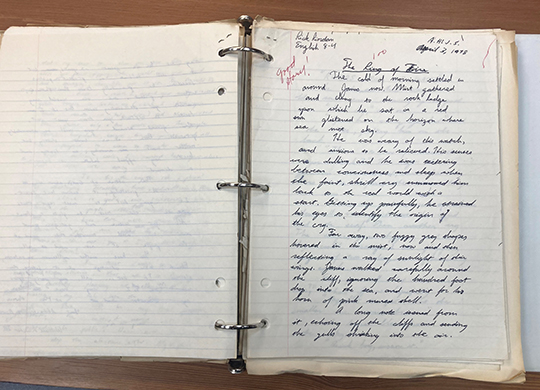


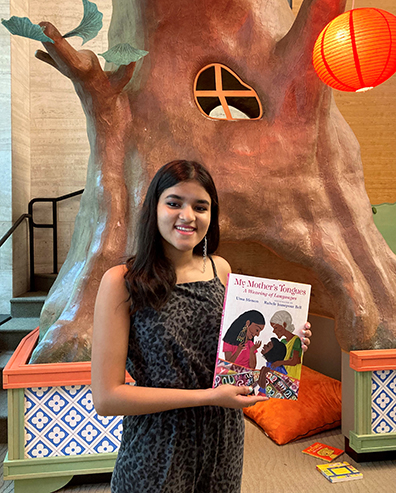
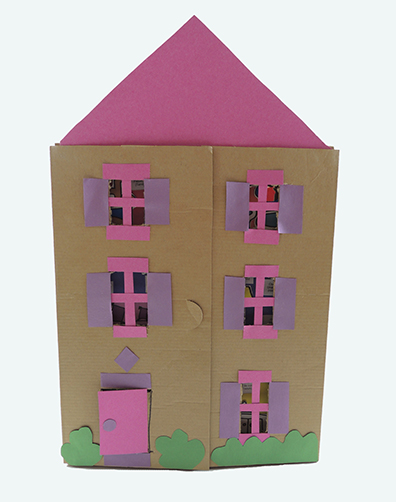 …that opens to reveal the names of everyday household items in all the languages mentioned in her book! Malayalam, Spanish, Hindi, French, and Tamil!
…that opens to reveal the names of everyday household items in all the languages mentioned in her book! Malayalam, Spanish, Hindi, French, and Tamil! We used some flat boxes we acquired from our library’s
We used some flat boxes we acquired from our library’s  After story time, I caught up with Uma to ask her about her experiences writing her picture book, and what’s she’s planning to do next:
After story time, I caught up with Uma to ask her about her experiences writing her picture book, and what’s she’s planning to do next: